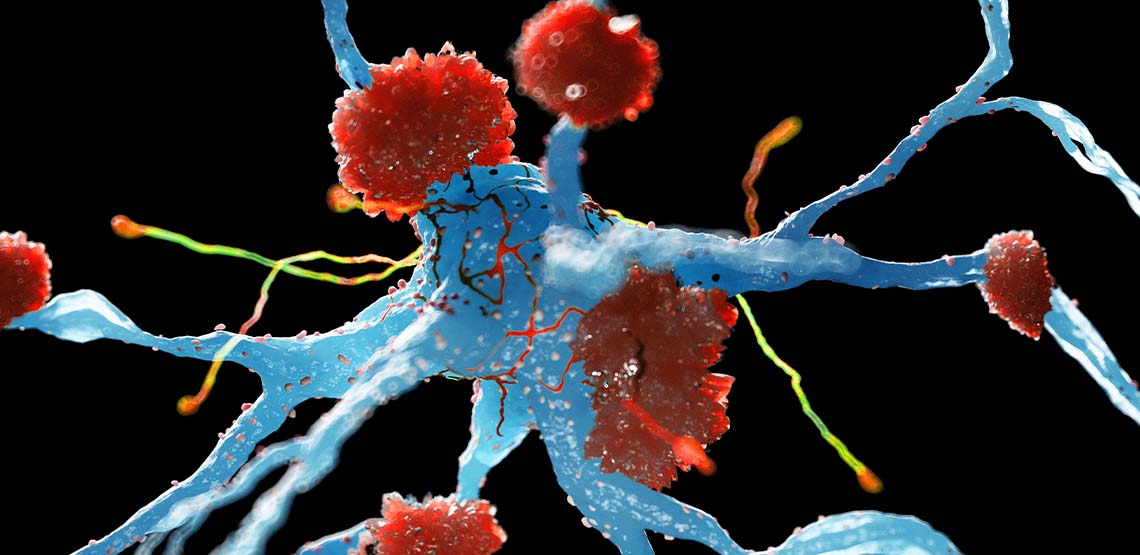What Are the Different Types of Amyloidosis?
Your body produces different types of protein, which help it function properly, but for unknown reasons, abnormal proteins may form. Amyloidosis is a progressive disease that involves the production of abnormal proteins, called amyloids, that can lead to organ damage. There are also different types of amyloidosis.
In people who develop amyloidosis, various normal proteins form clumps or deposits of amyloids. Different forms of the condition develop depending on which proteins lead to the formation of amyloids.
When amyloids form, it interferes with normal organ function. As the amyloids continue to deposit, it leads to the progressive dysfunction of the organs involved. Often, more than one organ is affected.
What Causes Amyloidosis?
There is still a lot about amyloidosis that is not known. Researchers do know that various organs and systems may be affected, including the kidneys, heart and nervous system. The abnormal proteins may form due to an inflammatory or genetic condition. In other cases, the cause is unknown.
Types of Amyloidosis
There are different forms or types of amyloidosis. Each form occurs due to the development of abnormal proteins, but certain forms may have a genetic connection or affect only one organ system.
1. Primary Amyloidosis
According to the Amyloidosis Foundation, primary amyloidosis, also called immunoglobulin light chain amyloidosis (AL), is the most common type of the disease. It typically affects the kidneys, heart, nerves and liver. Usually, it affects adults between 50 and 80, but it can develop in younger people. It is also more common in men.
2. Secondary Amyloidosis
Secondary amyloidosis develops due to another disease. Usually, this form of the disease occurs due to certain inflammatory conditions, including inflammatory bowel disease and rheumatoid arthritis. Usually, it affects the spleen, liver and kidneys.
3. Familia Amyloidosis
This subtype of the condition is inherited. It usually occurs due to transthyretin proteins made in the liver that lead to the development of amyloids. It affects the kidneys, heart and nerves. According to the National Organization for Rare Disorders, familial is more common in African Americans than Caucasians.
4. Localized Amyloidosis
This form of the disease does not affect multiple organs. Instead, it affects one organ system, most commonly the skin, lungs, or bladder. Although symptoms may still be significant, it tends to have a better prognosis than other forms of the disease.
5. Wild-Type Amyloidosis
This type of amyloidosis usually affects the heart, and it is most often found in men over 70.
6. Dialysis-Related Amyloidosis
Dialysis is lifesaving for people with kidney disease, but a complication of long-term dialysis is a form of amyloidosis. In dialysis-related amyloidosis, the abnormal proteins tend to form in the tendons and joints.
Common Symptoms
The symptoms of amyloidosis vary depending on which organs are affected. At first, symptoms may not even be present. As the condition progresses, symptoms become more severe and life-threatening. Since the condition may affect multiple organs, there is a long list, but not everyone experiences all symptoms:
- Low blood pressure
- Chest pain
- Irregular heart rate
- Lightheadedness
- Fluid buildup in the legs from kidney involvement
- Swelling in the abdomen from liver involvement
- Loss of appetite
- Diarrhea
- Weight loss
- Dizziness
- Pain or numbness in the hands and feet
- Fatigue
- Weakness
- Joint pain
Related Search Topics (Ads)
What Are the Treatment Options?
Currently, there is no cure for any form of amyloidosis. Treatment is available to slow the progression of the disease and decrease symptoms.
Stem Cell Transplant
One of the main treatments to provide the best control of the disease is a stem cell transplant. The process involves collecting a person’s own stem cells, giving chemotherapy and then infusing stem cells back into the individual. The hope is the stem cells slow the production of the abnormal proteins and preserve organ function.
A stem cell transplant has risks, and not everyone with amyloidosis is an appropriate candidate. People who already have organ damage or have other risk factors may not be eligible for a stem cell transplant.
Chemotherapy
Some chemotherapy drugs used to treat cancer are used to treat primary amyloidosis. The drugs may stop or slow the production of cells that lead to the development of amyloid proteins.
Medications
In addition to chemo drugs, other types of medications may be used to treat amyloidosis. For example, medications that block proteasomes, which play a role in the development of amyloids, may be administered. Medications that reduce inflammatory conditions leading to secondary amyloidosis may also be prescribed.
Other types of medications are used to treat symptoms. For example, medications are available that control heart rate or increase blood pressure. Drugs are also prescribed to treat nausea or reduce the risk of blood clots.
Dialysis
Some people with amyloidosis may require dialysis if they have kidney failure from the disease. Dialysis involves using a machine to filter the waste products, such as salt and excess fluids from the blood. Dialysis is not a cure for amyloidosis. It just treats kidney failure.
Organ Transplant
In some cases, the abnormal amyloid proteins are formed in the liver. If a person qualifies, a liver transplant may be performed, which would stop the production of the amyloids, but the person has to be healthy enough for the transplant, and a suitable donor must be found.


